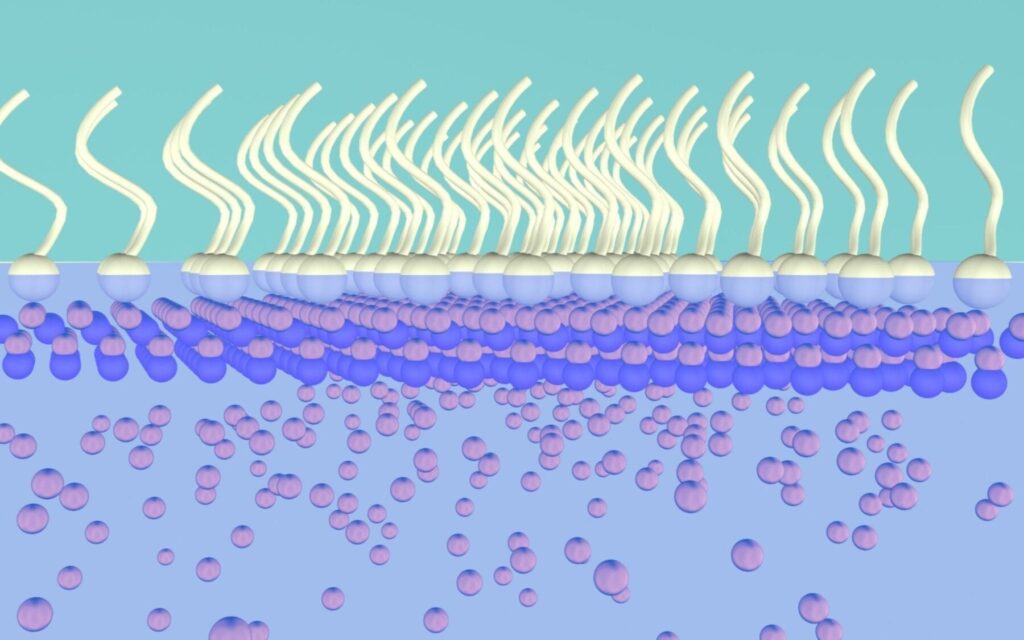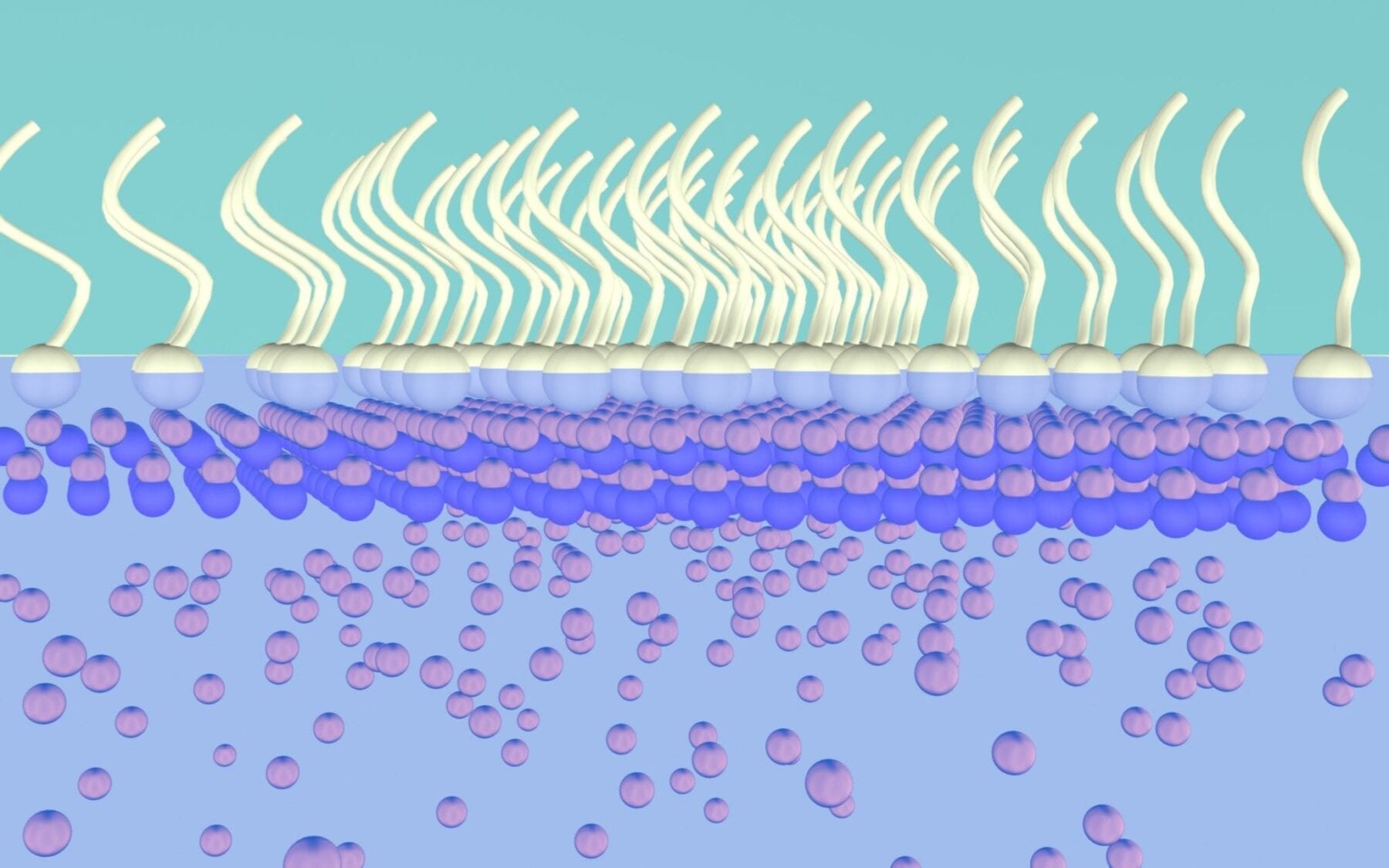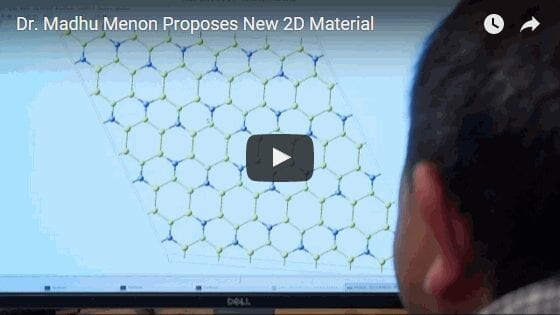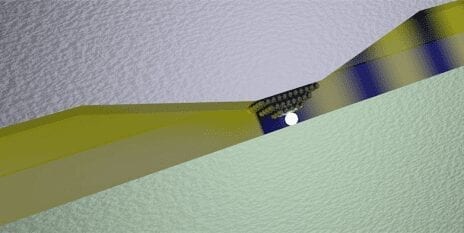
After six years of painstaking effort, a group of University of Wisconsin—Madison materials scientists believes the tiny sheets of the semiconductor zinc oxide they’re growing could have huge implications for the future of a host of electronic and biomedical devices.
The group — led by Xudong Wang, a UW–Madison professor of materials science and engineering, and postdoctoral researcher Fei Wang — has developed a technique for creating nearly two-dimensional sheets of compounds that do not naturally form such thin materials. It is the first time such a technique has been successful.
The researchers described their findings in the journal Nature Communications on Jan. 20.
Essentially the microscopic equivalent of a single sheet of paper, a 2-D nanosheet is a material just a few atoms thick. Nanomaterials have unique electronic and chemical properties compared to identically composed materials at larger, conventional scales.
“What’s nice with a 2-D nanomaterial is that because it’s a sheet, it’s much easier for us to manipulate compared to other types of nanomaterials,” says Xudong Wang.
Until now, materials scientists were limited to working with naturally occurring 2-D nanosheets. These natural 2-D structures include graphene, a single layer of graphite, and a limited number of other compounds.
Developing a reliable method to synthesize and manufacture 2-D nanosheets from other materials has been a goal of materials researchers and the nanotechnology industry for years.
In their technique, the UW–Madison team applied a specially formulated surfactant — a detergent-like substance — onto the surface of a liquid containing zinc ions.
Due to its chemical properties, the surfactant assembles itself into a single layer at the surface of the liquid, with negatively charged sulfate ions pointed in the direction of the liquid. Those sulfate ions draw the positively charged zinc ions from within the liquid to the surface, and within a couple hours enough zinc ions are drawn up to form continuous zinc oxide nanosheets only a few atomic layers thick.
Xudong Wang first had the idea for using a surfactant to grow nanosheets during a lecture he was giving in a course on nanotechnology in 2009.
“The course includes a lecture about self-assembly of monolayers,” he says. “Under the correct conditions, a surfactant will self-assemble to form a monolayer. This is a well-known process that I teach in class. So while teaching this, I wondered why we wouldn’t be able to reverse this method and use the surfactant monolayer first to grow the crystalline face.”
The tiny sheets of the semiconductor zinc oxide they’re growing could have huge implications for the future of a host of electronic and biomedical devices.
After five years of trial and error with different surfactant solutions, the idea paid off.
“We are very excited about this,” says Xudong Wang. “This is definitely a new way to fabricate 2-D nanosheets, and it has great potential for different materials and for many different applications.”
Already, the researchers have found that the 2-D zinc oxide nanosheets they’ve grown are able to function as semiconductor transistors called a p-type, the opposite electronic behavior of naturally occurring zinc oxide. Researchers have for some time attempted to produce zinc oxide with reliable p-type semiconductor properties.
Zinc oxide is a very useful component of electronic materials, and the new nanosheets have potential for use in sensors, transducers and optical devices.
But the zinc oxide nanosheets are only the first of what could be a revolution in 2-D nanomaterials. Already, the UW–Madison team is applying its surfactant method to growing 2-D nanosheets of gold and palladium, and the technique holds promise for growing nanosheets from all sorts of metals that wouldn’t form them naturally.
“It brings a lot of new functional material to this 2-D material category,” Wang says.
Read more: Nanosheet growth technique could revolutionize nanomaterial production
The Latest on: Nanosheet growth technique
[google_news title=”” keyword=”nanosheet growth technique” num_posts=”10″ blurb_length=”0″ show_thumb=”left”]
via Google News
The Latest on: Nanosheet growth technique
- Best growth stocks May 2024on May 5, 2024 at 5:00 pm
In the fiscal third quarter, Salesforce reported 11% revenue growth and raised its full-year operating cash flow growth guidance to between 30% and 33%. Salesforce has also prioritized ...
- 7 Essential Project Management Techniques In 2024on May 2, 2024 at 1:17 pm
He is currently the Head of Growth at Sagetap.io ... Top project managers use proven project management techniques to successfully manage a project. A project management technique is a framework ...
- How To Invest In Growth Stockson April 30, 2024 at 10:12 am
One helpful method is to focus on growth stocks vs value stocks. Growth stocks tend to be growing at rates significantly above the average for the market, thanks to their unique products or ...
- TSMC says first 1.6nm chips coming in 2026on April 25, 2024 at 9:38 am
The headline act at the event was A16, the next semiconductor process technology on its roadmap. TSMC said this is planned for production in 2026, and that silicon from it will provide an 8-10 percent ...
- How Does Gestalt Therapy Work?on April 18, 2024 at 5:00 pm
Gestalt therapy is a form of psychotherapy in which self-awareness and self-acceptance are considered keys to personal growth ... therapist and uses active techniques such as role-playing.
- Best Growth Stocks Right Nowon April 11, 2024 at 12:16 pm
Growth stocks are made up of companies that are set to grow their earnings and revenue by an abundant amount compared to the rest of the market, which also has an impact on the price of each ...
- Best Growth Stocks for May 2024on April 9, 2024 at 3:17 am
Growth stocks can be a great way to earn returns in excess of the overall stock market. Identifying a good growth stock requires looking past valuation and identifying market trends and the ...
- Novel fabrication technique takes transition metal telluride nanosheets from lab to mass productionon April 3, 2024 at 9:16 am
But a team of researchers has recently developed a novel fabrication technique—the use of chemical ... high crystallinity while achieving large nanosheet size and ultrathin feature continues ...
- Japanese techniques to stop overthinking and support growthon February 9, 2024 at 12:34 pm
Are there ways to stop overthinking and pause our thoughts from spiraling? Japanese culture offers a host of techniques that are aimed at seeking control over your thought patterns. These ...
- An Introduction to Population Growthon November 24, 2021 at 9:20 pm
They are described by characteristics that include: If population growth is just one of many population characteristics, what makes studying it so important? First, studying how and why ...
via Bing News











